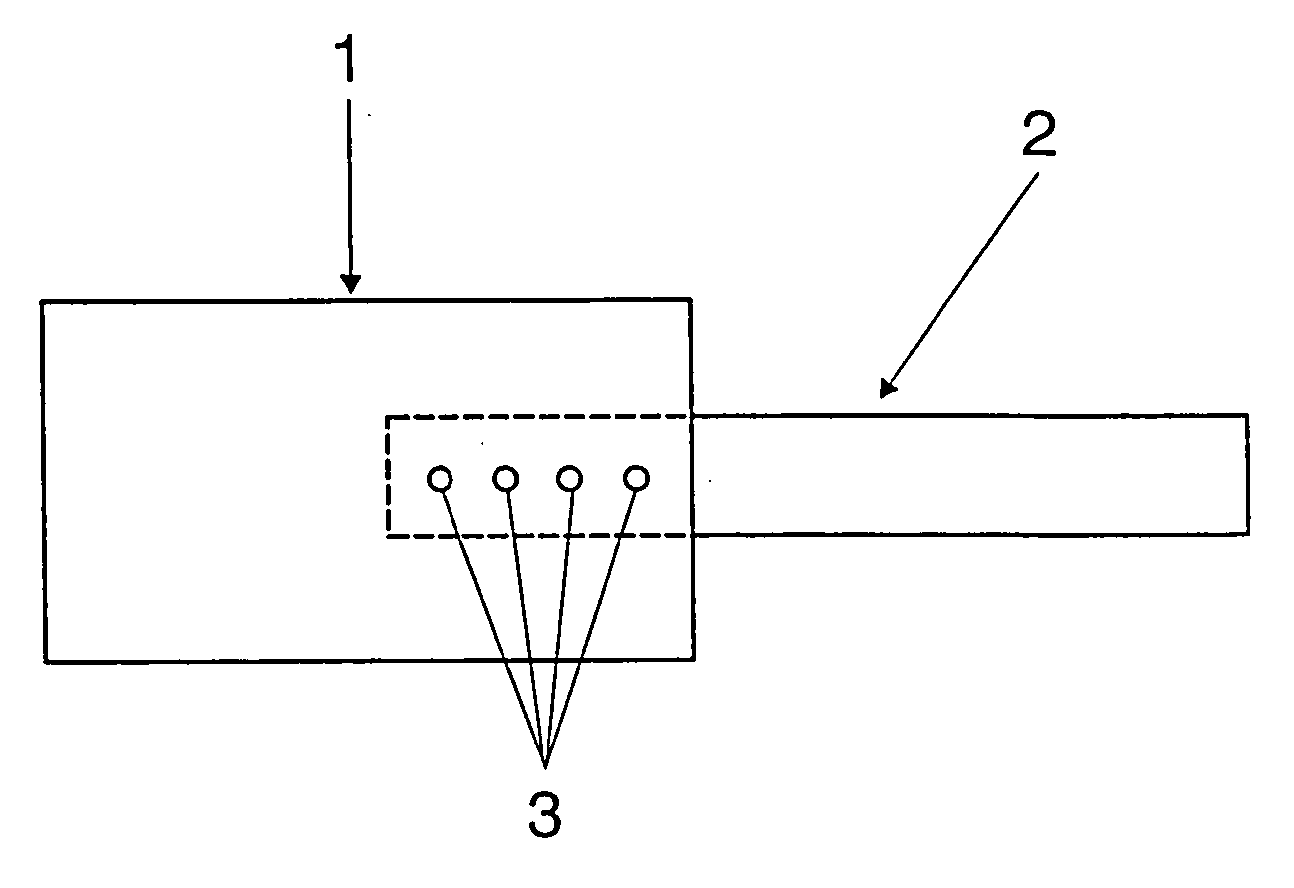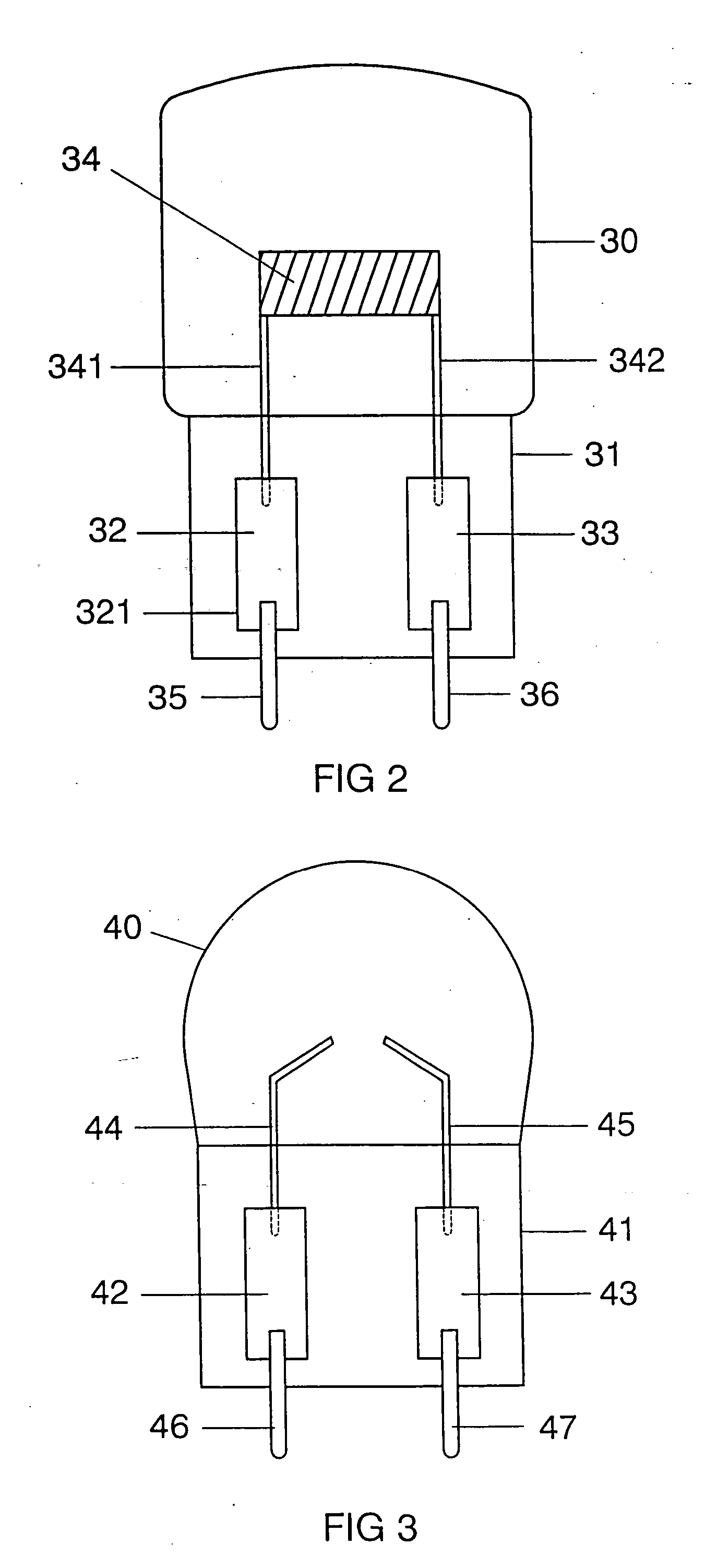Method for welding a metal foil to a cylindrical metal pin
a metal foil and cylindrical technology, applied in the manufacture of electrode systems, electric discharge tubes/lamps, capacitors, etc., can solve the problem of replacing welding electrodes, and achieve the effect of simplifying the alignment of lasers and increasing bearing surface area
- Summary
- Abstract
- Description
- Claims
- Application Information
AI Technical Summary
Benefits of technology
Problems solved by technology
Method used
Image
Examples
Embodiment Construction
[0011] The molybdenum foil 1 illustrated in FIG. 1 is 27 μm thick. The molybdenum pin 2 is cylindrical in form and has a diameter of 0.78 mm. To be welded together, the molybdenum foil 1 and the molybdenum pin 2 are clamped in a holder, arranged such that they overlap and are in contact with one another. The four weld spots 3 are produced with the aid of a neodymium:yttrium aluminum garnet laser, which generates infrared radiation with a wavelength of 1064 nm. The laser is operated in pulsed mode with a mean power of 100 Watts and a peak pulse power of 8 kilowatts. The duration of the pulses is preferably 0.5 ms. The diameter of the laser beam is 0.1 mm. The four weld spots are arranged in a row, at intervals of 0.5 mm. To produce the four weld spots 3, the laser is directed onto the surface of the molybdenum foil 1 remote from the molybdenum pin 2, in each case onto a spot of the contact surface between molybdenum foil 1 and molybdenum pin 2, and at this spot the material of the mo...
PUM
| Property | Measurement | Unit |
|---|---|---|
| diameter | aaaaa | aaaaa |
| thickness | aaaaa | aaaaa |
| diameter | aaaaa | aaaaa |
Abstract
Description
Claims
Application Information
 Login to View More
Login to View More - R&D
- Intellectual Property
- Life Sciences
- Materials
- Tech Scout
- Unparalleled Data Quality
- Higher Quality Content
- 60% Fewer Hallucinations
Browse by: Latest US Patents, China's latest patents, Technical Efficacy Thesaurus, Application Domain, Technology Topic, Popular Technical Reports.
© 2025 PatSnap. All rights reserved.Legal|Privacy policy|Modern Slavery Act Transparency Statement|Sitemap|About US| Contact US: help@patsnap.com



